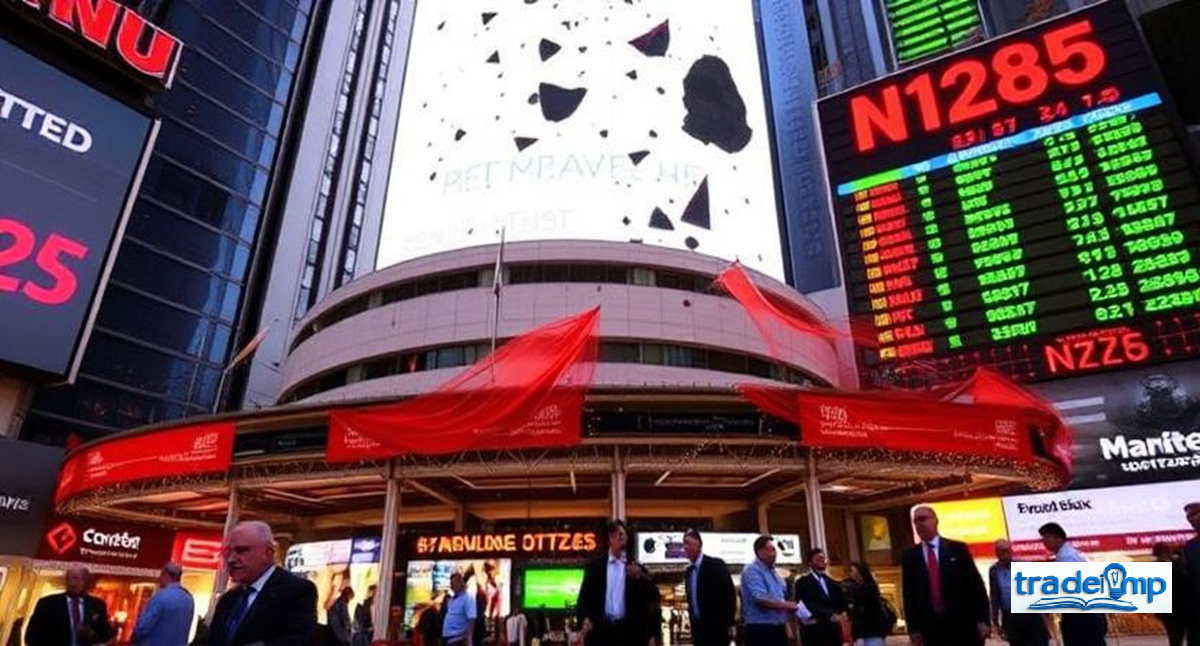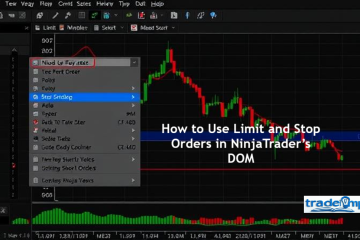Today, April 7, 2025, the Indian stock markets took a big hit. The BSE Sensex dropped by over 2,200 points, closing at 73,137.90, while the NSE Nifty fell by 743 points to end at 22,161.60. For anyone who follows the stock market, this was a shocking day. Investors lost nearly ₹14 lakh crore in just a few hours. Naturally, people are asking: Why did this happen? What caused the Sensex and Nifty to crash so badly? In this blog, we will break it down in simple terms and explain the reasons behind today’s market fall. Markets Crash Today
The key reasons why the markets crashed today and what it means for regular people like you and me.
-
Global Panic Over Trump’s Tariffs
The biggest reason for today’s market crash is something happening far away from India—in the United States. US President Donald Trump recently announced new tariffs, which are like taxes on goods coming into the US from other countries. On April 2, 2025, he put a 25% tariff on imports from Canada and Mexico, a 10% extra tariff on China (making it 20% total), and a 26% tariff on goods from India. Today, he hinted at even more tariffs, including on medicines, which scared investors everywhere.
What Are Tariffs, and Why Do They Matter?
Tariffs are fees that a country charges on products it imports from other nations. Think of it like this: If India sends cars or medicines to the US, the US government now charges an extra tax on those items. This makes Indian goods more expensive in the US, so people there might buy less of them. For India, this is bad news because we export a lot to the US—things like IT services, medicines, and steel.
When the US announced these tariffs, investors got worried. They feared it could start a “trade war.” A trade war happens when countries keep putting tariffs on each other, making trade harder and more expensive. China has already hit back with its own 34% tariff on US goods. If this keeps going, it could slow down the global economy, and India would feel the pain too.
How Did This Affect Sensex and Nifty?
The Sensex and Nifty are like thermometers for India’s stock market. When global news like this hits, they react fast. Today, investors sold their stocks in a panic because they think these tariffs will hurt Indian companies that sell to the US. For example, IT companies like TCS and Infosys, which make money from American clients, saw their stock prices drop. Pharma companies like Sun Pharma also fell because the US might buy fewer Indian medicines. This fear spread across the market, pulling the Sensex and Nifty down. Markets Crash Today
-
Fear of a US Recession
Another big worry today is what’s happening in the US economy. The US is the world’s biggest economy, so when it sneezes, the rest of the world catches a cold—including India. After Trump’s tariff announcements, experts started saying the US might head into a recession. A recession is when the economy shrinks instead of growing, and people spend less money.
Why Are People Talking About a Recession?
Banks like JP Morgan now say there’s a 60% chance of a US recession in the next year, up from 40% before. Goldman Sachs, another big financial firm, cut its growth forecast for the US economy in 2025 from 1% to just 0.5%. They think Trump’s tariffs will raise prices in the US, hurt companies’ profits, and make people spend less. If the US economy slows down, it’ll buy less from countries like India.
How Does This Hit India?
India depends on exports to the US—everything from tech services to clothes and steel. If the US stops buying as much, Indian companies make less money. Their stock prices fall because investors don’t want to hold onto stocks that might lose value. Today, this fear made people sell stocks, dragging the Sensex and Nifty lower.
-
Foreign Investors Pulling Out Money
Here’s something else that hurt the markets today: foreign investors, or Foreign Institutional Investors (FIIs), sold a ton of Indian stocks. These are big players—like banks and funds from the US, Europe, or Japan—who invest billions in India. When they get nervous, they take their money out and put it somewhere safer, like US bonds or gold.
How Much Did They Sell?
In 2025 so far, FIIs have sold Indian stocks worth over ₹1.13 lakh crore. Just in the last few days, they’ve pulled out billions more. Today alone, the selling was massive. Why? Because of the tariff news and recession fears. They’re worried India’s market will keep falling, so they’re cashing out now.
Why Does This Matter to Sensex and Nifty?
When FIIs sell, it’s like a big wave hitting the market. They own a lot of stocks in companies listed on the Sensex and Nifty—like Reliance, HDFC Bank, and Infosys. When they sell these stocks, the prices drop, and the whole market feels it. Today, their selling added fuel to the fire, making the crash worse.
-
Weakness in Key Sectors
Not every company in the Sensex and Nifty fell for the same reason. Some big sectors—like IT, metals, and banking—got hit harder than others. Let’s look at why.
- IT Sector: Trouble with the US
India’s IT companies, like TCS, Infosys, and Wipro, make a lot of their money from the US. If the US economy slows down or spends less on tech because of tariffs, these companies could lose business. Today, the Nifty IT index fell 2.5%, with stocks like Coforge and HCL Tech dropping sharply. Investors sold these stocks, worried about lower profits ahead.
- Metal Sector: Falling Prices
Metal companies like Tata Steel saw their stock prices crash—some by as much as 8.5%. Why? Tariffs could mean less demand for steel in the US, and global metal prices are already falling. Plus, crude oil prices dropped 3% today to $67.85 a barrel, which signals weaker global demand. This hurt metal stocks and pulled the Sensex down.
- Banking Sector: Economic Worries
Banks like IndusInd Bank and HDFC Bank also fell, with the Nifty Bank index dropping 3.19%. When the economy looks shaky—like it does now—people borrow less money, and banks make less profit. Investors sold bank stocks today, adding to the market’s woes.
-
Panic Selling and High Volatility
Finally, there’s the human side of this crash: panic. When stock prices start falling fast, people get scared. They don’t want to lose more money, so they sell their stocks quickly. This is called panic selling, and it makes the drop even worse.
What’s Volatility?
Volatility is how much stock prices jump up and down. Today, the India VIX—a measure of market fear—shot up by 66% to 22.8. That’s a huge jump! It shows investors are super nervous. When volatility is high, prices swing wildly, and more people sell, pushing the Sensex and Nifty lower.
Why Did Panic Spread?
Today’s crash wasn’t just about tariffs or FIIs—it was also about how investors reacted. News of the Sensex falling 4,000 points early in the day (it later recovered some) spooked everyone. Social media posts on X showed people freaking out, with phrases like “Dalal Street bloodbath” trending. This fear fed into more selling, making the crash bigger. NFT Market Crashes 63% Since December While AI Collections Show Resilience
What Happened Around the World?
India wasn’t alone in this mess. Markets everywhere crashed today:
- US Markets: S&P 500 futures fell 4.3%, and Nasdaq futures dropped 5.5%. Investors there are scared of Trump’s tariffs too.
- Asia: Japan’s Nikkei fell 7.8%, Hong Kong’s Hang Seng dropped 10%, and South Korea’s market lost 4.6%.
- Europe: Markets there were down too, following the global panic.
This shows the crash wasn’t just an Indian problem—it was a worldwide reaction to trade war fears and a possible US recession.
How Did India’s Market Compare?
Here’s something interesting: Even though the Sensex and Nifty fell over 3%, they didn’t drop as much as some other markets—like Hong Kong’s 10% fall. Experts say India might be a bit safer because we don’t rely only on exports to the US. Our economy is more diverse, with strong local demand. Still, today’s crash hurt a lot.
What Does This Mean for Regular People?
If you’re not an investor, you might wonder: Why should I care? Well, a stock market crash affects more than just rich traders. Here’s how:
- Jobs: If companies lose money, they might cut jobs or stop hiring.
- Prices: Tariffs could make imported goods—like electronics or clothes—more expensive.
- Savings: If you have money in mutual funds or stocks, their value might drop.
For investors, today was a tough day. About ₹14 lakh crore of wealth vanished from the market. But some experts say this could be a chance to buy stocks at lower prices, if you’re willing to wait for a recovery.
Is There Hope for Recovery?
Despite the gloom, there are signs things might get better:
- RBI’s Role: India’s central bank, the Reserve Bank of India (RBI), might step in. A rate cut (lowering interest rates) could boost the economy and markets.
- Earnings Season: Companies will soon report their Q4 2025 results. Good profits could lift the market.
- Technical Bounce: Some analysts say the market is “oversold,” meaning it might bounce back soon.
But for now, experts warn the market could stay shaky. The Sensex might test 71,500 or even 70,000 if things get worse. The Nifty could fall to 21,800. It all depends on what happens with tariffs and the US economy.
What Should Investors Do?
If you’re an investor, here’s some simple advice:
- Don’t Panic: Selling now might lock in your losses. Wait and see how things play out.
- Look for Bargains: If you have extra cash, some stocks are cheaper now—good for long-term buys.
- Stay Updated: Watch the news on tariffs, the US economy, and RBI moves.
Wrapping Up
Today’s market crash was a wild ride. The Sensex and Nifty fell hard because of global fears over Trump’s tariffs, a possible US recession, foreign investors selling, weak sectors, and panic. It wasn’t just India—markets worldwide felt the heat. For regular folks, this could mean higher prices or job worries down the road. For investors, it’s a test of patience. Markets Crash Today. Shibtoshi’s Vision: Building a Stronger Crypto Future Through Community Unity
The stock market isn’t gone for good, though. It’s been through crashes before and bounced back. Whether it’s a quick recovery or a longer slump, one thing’s clear: today, April 7, 2025, will be remembered as a rough day on Dalal Street.




